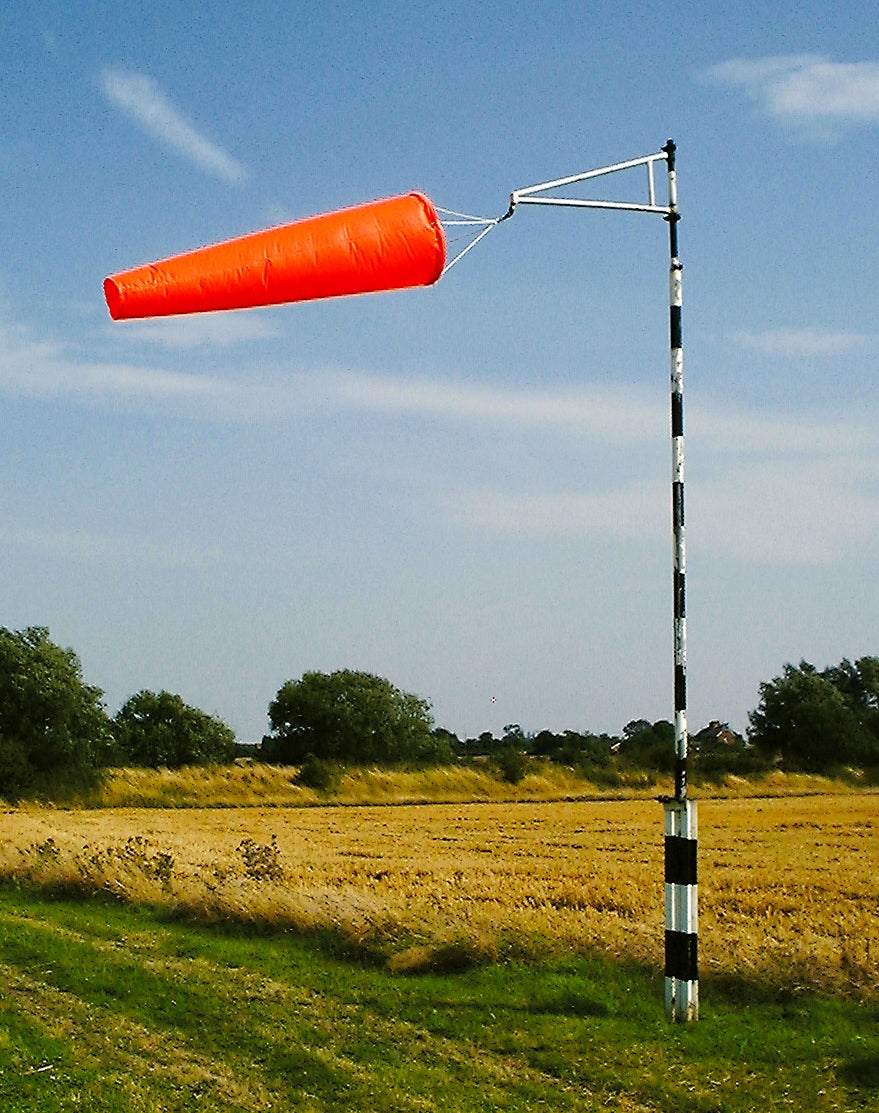
The Evolution of a Windsock
A truncated cone of textile mounted on a mast so that it is free to rotate about a vertical axis to indicate the local wind direction.
Look back in time

Although it is unclear who actually invented the windsock, the earliest windsocks were used centuries ago by the Japanese to celebrate ‘Boys Day’. Each household would fly “Koinobori” on a tall bamboo pole on the 5th day of the 5th month with one to represent the father and one for each son. The Koinobori were generally made of paper or cotton depending on the family’s wealth.
Romans, as far back as 150 A.D., have also attributed as using a form of windsocks as military banners to differentiate between their different groups.
Modern day materials
Wherever their origins, they are a far cry from today’s industry standard windsock. Today’s windsocks are generally made in a coated polyester or nylon fabric with stainless steel or nylon webbing harness. The fabrics used are designed to withstand extreme temperatures, from the very cold in Antarctica to the very warm in the Middle East. At Piggotts we use a coated nylon product which is lightweight meaning it can be used on the smallest of windsocks and can to show even the lightest breeze. Our windsocks can be fully customised by having alternating stripes in a range of colours and can include printed designs or text. The designs are computer generated then hard inked onto the fabric in a process similar to screen printing and gives the best effect for simple designs on the material.
Where will you find a windsock?
Windsocks help clients in a range of industries measure the wind direction and speed. This is important in many sectors, such as aviation and energy, and many places are required to display windsocks by law for health and safety. Our windsocks are flown in all corners of the world, from airports in Greece to petrochemical plants in Dubai, from oil rigs in the North Sea to manufacturing plants in Italy.
- Outside runways on international airports and national airfields, helipads and heliports
- Petrochemical industry: on oil rigs and chemical plants where gaseous leaks are a threat to the safety of all staff and nearby properties in case of an emergency fire
- Factories and manufacturing plants where emissions are exhausted
- Chemical facilities where even the smallest air pollution poses a serious threat
- Seaports and offshore drilling rigs
- Mountain roads and highways with high speed winds
- Other windy locations
- Company premises – promotional windsocks used for advertising
- Sporting events – windsocks used for decoration
Our standard windsock range is available to purchase on our website, https://piggotts.co.uk/product/windsocks/. For any other sizes or variations, masts and swivel arms please contact our sales team sales@pfandb.co.uk or on 01376 514372.
